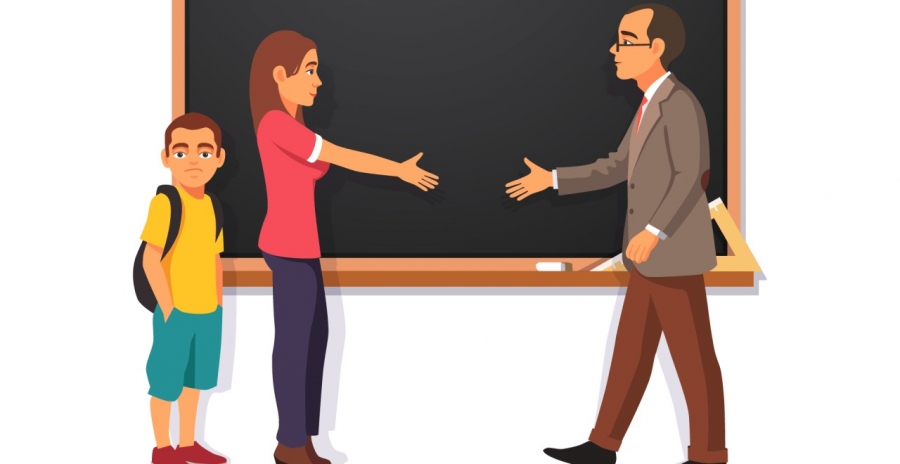
Do you drop your child off at the daycare center, take them off, and pick them up later without considering their learning? If so, it is about time you thought about your child’s learning and considered how to support them. A study published by the National Library of Medicine reveals that parent participation in early childhood education positively influences their child’s academic performance. And what better way can a parent get involved in their child’s education than to collaborate with the teacher?
Establishing a solid partnership with childcare educators promotes your child’s development and enhances their learning experience. This article will emphasize why parent-teacher collaboration is crucial to successful early childhood education.
1. Strengthen the Foundation for Education Success
A report on Forbes states that early childhood education is critical to long-term success. Children who receive quality education during their early years excel in every aspect of life. And teacher-parent collaboration is vital in ensuring kids get quality learning by laying a solid education foundation for them. Teachers and parents have the power to create and maintain a cohesive support system for young learners to enjoy an enhanced learning experience through:
- Consistency
As a parent, you should know that your child’s learning experience lies beyond the classroom walls. The opportunities and experiences you provide at home help maintain consistency for learning. You can collaborate with teachers to encourage learning at home.
A teacher could recommend creating a routine for homework. The Child Mind Institute reported that a homework routine could entail establishing a schedule and dedicating space for studying. Reading with your child, giving your children chores, and encouraging daily physical activity also help young learners understand and follow the rules and stick to routines, which promotes better learning outcomes.
- Personalized Learning Support
No one knows their child’s strengths and weaknesses better than a parent. When teachers partner with parents, they can use each parent’s information about their child. Then, they customize their teaching techniques to provide a more personalized teaching experience that addresses each student’s specific needs and expectations.
- Continuous Monitoring
The teacher-parent partnership comes in handy in ensuring learners in preschool perform well in their academics. How? Through continuous monitoring at school and home, parents and teachers can determine if a learner is on the right track or falling behind. For example, a teacher can regularly update you about your child’s academic progress and behavioral changes. Doing so helps you and the teacher solve a problem affecting the learner’s performance early on.
2. Identify Child’s Interest
Another notable benefit of parent-teacher collaboration is providing enrichment opportunities for preschoolers. Ideally, parents and teachers can work together to identify a child’s interest and seek ways to help them fulfill their passion. For example, if your kid shows interest in caring for the environment, you could partner with the childcare provider to teach them how to recycle paper and aluminum or make compost. If a child loves animals, teachers and parents can organize trips to the zoo, go for nature walks, and provide animal-themed books.
3. Create a Supportive Educational Environment
Students, especially those in daycare centers, excel in academics when they feel safe and valued. A collaboration between teachers and parents can help create safe learning spaces by:
- Fostering an emotionally supportive learning environment
For example, a teacher can work with you to identify any emotional or social challenge your child might face. Let’s say a child is facing bullies or peer conflicts. Their teacher can update you, and together, you can find an effective way to address these issues while maintaining a positive school environment for successful learning.
- Encouraging effective communication
A strong teacher-parent relationship creates a sense of trust between teachers, students, and parents. A collaborative assessment of a child’s progress allows personalization, thus improving the preschoolers’ education journey. For instance, parents can share their observations from home with teachers while teachers provide insights from the learning environment. That way, they can develop a plan to improve the child’s grade.
Conclusion
Early childhood education lays a firm foundation for a child’s success in higher education, work, and life. However, this is only possible when teachers and parents collaborate in enhancing a child’s learning experience. Collaboration between teachers and parents creates and maintains a conducive preschool learning environment. When teachers and parents partner to improve the learner’s school experience, they provide enrichment opportunities to satisfy interests and passion. They also monitor the child’s learning progress together, promoting consistency in following routines and supporting personalized learning.
Sandra Chiu works as Director at LadyBug & Friends Daycare and Preschool.


 The search for greener, more sustainable energy has intensified in recent years. Solar energy is one of the renewable energy sources that is the most promising and developing the fastest. This essay dives into the quest for maximum solar efficiency, examining the developments, difficulties, and potential future developments in efficiently utilising solar energy.
The search for greener, more sustainable energy has intensified in recent years. Solar energy is one of the renewable energy sources that is the most promising and developing the fastest. This essay dives into the quest for maximum solar efficiency, examining the developments, difficulties, and potential future developments in efficiently utilising solar energy.




